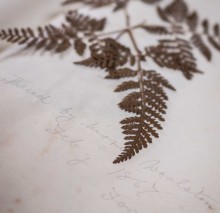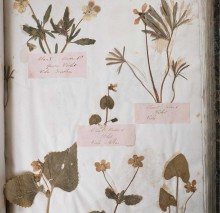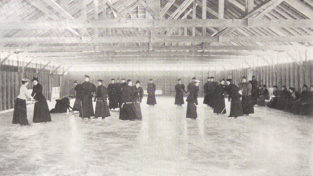MoHome Memories: Herbarium Collection
A window into plant life of the past
Until 1905, the creation and maintenance of an herbarium was a regular part of a Mount Holyoke student’s coursework. In fact, during the mid-nineteenth century collecting specimens for one’s herbarium was one of the few approved activities in which Seminary students could partake while completing their mandatory, daily one-mile walks.
Herbaria were essential for the study of plant taxonomy and geographic distributions.
A collection of preserved plants—usually dried and mounted on stiff paper, underneath which important data were recorded— herbaria were essential for the study of plant taxonomy and geographic distributions. Mary Lyon herself kept an herbarium, as did famed Mount Holyoke botany professors Lydia Shattuck, class of 1851, and Henrietta Hooker, class of 1873, evidence of the strong emphasis Mount Holyoke put on the study of science even in its earliest years as an institution.
The College’s original herbarium collection, which was housed in Williston Hall—the former art and science building that stood roughly where Clapp Hall is now located—contained thousands of valuable plant specimens that as a whole gave detailed insight into the vast flora of the Pioneer Valley. When the building burned to the ground in 1917, the entire collection was lost.
But a determined botany professor, Alma Stokey, who taught at the College from 1908 until 1942, set out on a path to recreate the College’s herbaria. She solicited specimens from Mount Holyoke students, alumnae, and professors and also reached out to peers at other colleges, including her alma mater, Oberlin College, which donated nearly 2,000 specimens. By the 1970s, these collections were largely forgotten about as the biology department made room for new equipment and lab space, where students no longer kept the plant specimens they used for learning. Today, the remaining collection is housed in Archives and Special Collections as well as in Clapp Hall and continues to provide valuable insight into plant populations over time.
—By Taylor Scott
This article appeared in the winter 2015 issue of the Alumnae Quarterly.
January 18, 2015
















Leave a Reply